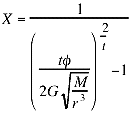PRECESSION OF THE BINARY STAR DI HERCULIS AND BINARY PULSAR PSR J1518+4904
Lucy Haye
4021 Cedar Ave.
Long Beach, CA 90807
It has long been known that Newton’s and Einstein’s theories fail to describe the precession of binary stars(1). GR’s application to the DI Herculis precession grossly fails, giving 3.6 times the periastron of the star, whose values are 0.65 deg/cent (2340 sec/cent)(2), or 1 deg/cent (3600 sec/cent)(1). GR’s lower predicted value is 8403 sec/cent with the mass of the smaller star, or 8960 sec/cent with the two star masses averaged. Taking the sum of the two star mass, as should really be done, the values increase to 17920 sec/cent.
The 2340 sec/cent observed value is explained by the theory of relativity called Autodynamics, whose principal equations are(3):
![]()
![]()
![]()
![]()
(Where E = mass energy, mo = rest mass, KE = kinetic energy , ![]() = v/c, v = particle velocity, c = light velocity, mv = mass in motion and p = momentum of the particle.)
= v/c, v = particle velocity, c = light velocity, mv = mass in motion and p = momentum of the particle.)
The concept of mass-decay and energy-absorption drives Autodynamics to a theory of Universal Gravitation(5) based on the “pico-graviton.” When absorbed by matter, the pico-graviton produces gravitational force that maintains celestial bodies in motion. The Autodynamics equation for mass increment is:

(X = mass increment as fraction of M, t = time, ![]() =Total angle, G = Gravitational constant, M = Solar mass, r = Mercury orbital radius.)
=Total angle, G = Gravitational constant, M = Solar mass, r = Mercury orbital radius.)
Starting from the observed 43 seconds per century for the Mercury perihelion advance, X can be calculated. Once X is known,![]() can be calculated for other celestial bodies.
can be calculated for other celestial bodies.
The equation for the precession is

That is, proportional to the square root of the division of the solar mass by the orbital radius power 3.
![]()
Autodynamics’ Universal Gravitation explains 63%(1478 sec/cent) of DI Herculis’ observed precession (2340 sec/cent.), calculating proportionally with (M/r3)1/2, leaving 862 sec/cent. (37 %) to explain by the classical tidal force and rotational deformation. Reference (5) also mentions, for a tidal and rotational deformation of the star, a value of 1.93 +_0.26 deg/cent. It is obvious that this value is wrong because, by itself it is larger than the observed value. The right solution equates the sum of the two values with the observed value. This solution is given by the Autodynamics Universal Gravitation equation, as explained above. Autodynamics also explains, using preliminary data(6) the binary pulsar PSR J1518+4904.
The observed value is 0.011 deg/yr or 3960 sec/cent. The GR calculated value is 5640 sec/cent with mass averaged. AD calculated value is 2262 sec/cent, 57 % of 3960 sec/cent., leaving 1698 sec/cent., or 43 % to other reasons.
References
- E. F. Guinan, J. J. Marshall and F. P Maloney, Dept. of Astronomy and Astrophysics, Villanova University, Villanova, PA 19085, USA, taken from “Commission 27 and 42 of the AU Information Bulletin on Variable Stars,” Number 4101, Kenkely Observatory, Budapest, October 12, 1994, from the WWW.
- E. F. Guinan and F. P. Maloney, Astron. J., 90 1519(1985). C. Jeffries, Physics Essays 8, 168(1995)
- D. R. Walz, H. P. Noyes and R. L. Carezani, Phys. Review A, 29 2110(1984). The conclusion espoused in the paper by Noyes is irrelevant, because the electron receives external energy from the Klystron electromagnetic field, confirming the Bertozzi experiment(4) and the Special Relativity equation for kinetic energy. It is impossible then to compare one equation against the other, because Autodynamics applies to decay cases.
- W. Bertozzi. Amer. Journal of Physics, 32, 551(1964)
- R. L. Carezani <http://www.autodynamics.org/gravity.html>
- [48.03] Binary Pulsar PSR J1518+4904: Orbital Precession and Mass Estimates. D. J. Nice (NRAO), R. W Sayer, J. H Taylor (Princeton), from the WWW.